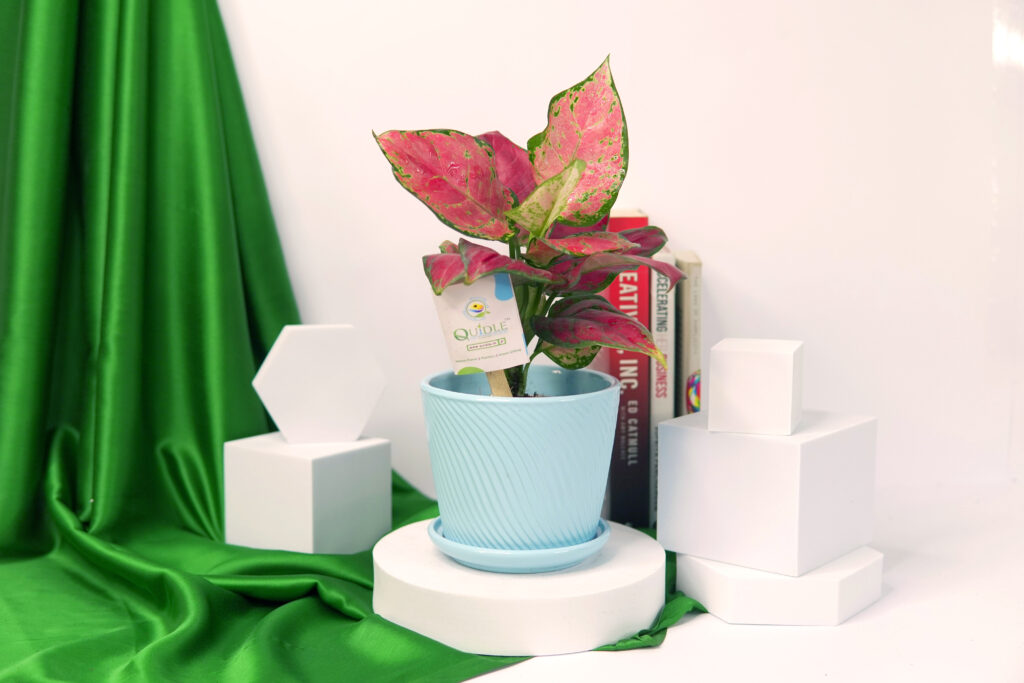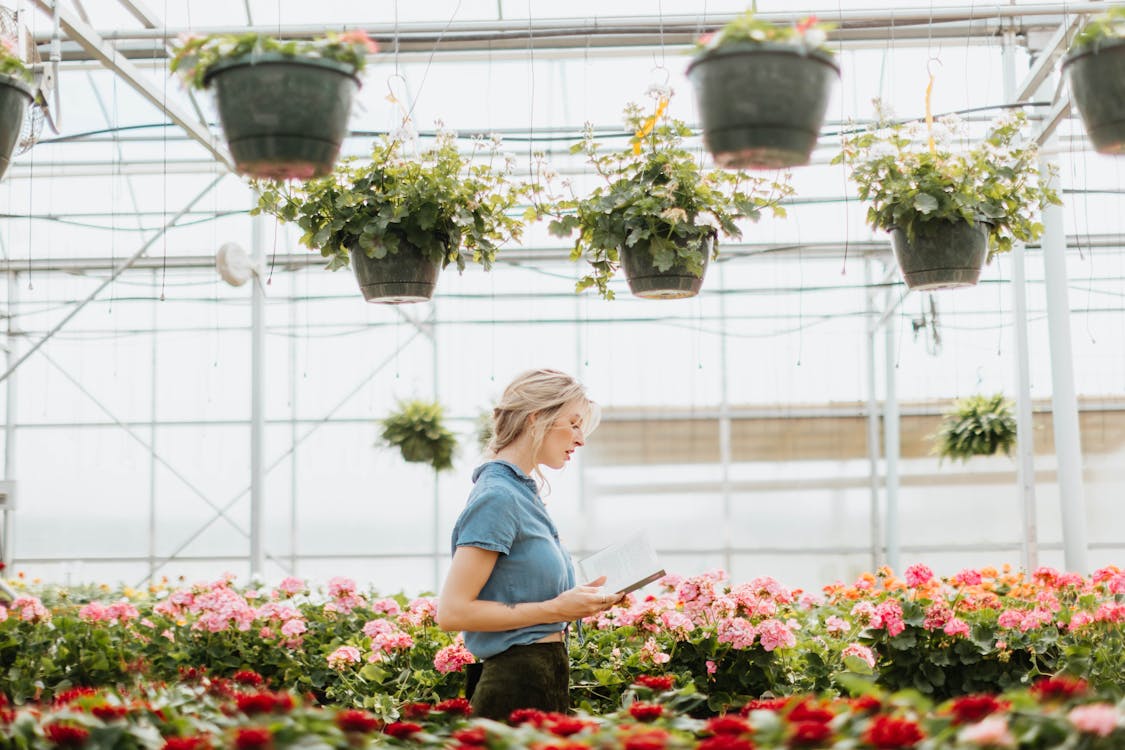Currently Empty: ₹0.00
TOP 9 LOW MAINTAINANCE PLANTS FOR BUSY PROFESSIONALS
Top 9 Low-Maintenance Indoor Plants for Busy Professionals includes a carefully chosen collection of hardy and low-maintenance houseplants that require little care to flourish. Hardy favorites including Pathos, Snake Plant, ZZ Plant, Spider plant and many more are on our list, which are ideal for people with busy schedules. These low-maintenance indoor plants boost the aesthetics of your home and office which provides advantages like better air quality and a experience of natural beauty. See how these easy-to-maintain plants may co-exist peacefully with your hectic schedule with our professional advice
1. SNAKE PLANT (Sansveria)

Plant Description:
The Snake plant is one of the most popular and resilient houseplants which is generally very suitable for busy professionals.
The greater option of both the experienced and inexperienced plant enthusiasts due to its eye catching, upright leaves and low-maintenance requirements.
Care and Benefits:
LIGHTING – The snake plant is adaptable to different light conditions but prefers indirect low lighting conditions. It can live in a darker spot, but it may not grow well or look its best. It can also adapt to a fair amount of direct sunlight but may scorch in the hot summer sun.
WATERING – Snake plants (Sansevieria) don’t need much water and can thrive on neglect. You should water them once in every 5 days, or when the top two to four inches of soil are completely dry out. During the winter, you can water them once a month if the soil is still moist after two weeks. The snake plant is watered once in 7 days.
Snake plants are generally used for or known for purifying the air which helps to remove toxins and improve indoor air quality.
Snake plants are highly resilient and require minimal care which can thrive to maintain the low maintenance purpose.
2. ZZ PLANT (Zamioculas Zamiifolia)

Plant Description:
ZZ plants are known as flowering plants, but they are very rarely producing flowers. Instead, this plant is known for its wide, dark green leaves. They can make great desk plants or floor plants and can grow quite tall if left alone.
This plant has a unique root locking system, which stores water, when the plant often starts to over-watering, but also performs well during droughts and places where frequent watering is not always easy.
So, due to these features in this plant it is suitable for the busy individuals to prefer for better standard of living and better health purposes.
Care and Benefits:
LIGHTING – Although the plant can tolerate lower indirect light, so the ZZ plant thrives in medium to low lighting condition. It is important to keep the plant away from intense, direct sunlight for any instance, by moving it towards the center of the room or placing a sheer curtain or drape over south-facing windows.
WATERING – Water your ZZ Plant in every 2-3 weeks, allowing the soil to dry out between waterings. Expect to water more often in brighter light and less often in lower light. Symptoms for water needs include wilting, wrinkled leaves, and dry potting mix, while wet mix or yellowing and mushy leaves signal overwatering and root rot.
ZZ plants also offer ornamental value which is a great indoor plant that can improve your home aesthetics. The glossy leaves and upright stems add a tropical touch to the area, makes a statement in the position that they are put at.
Beyond aesthetics, ZZ Plants come with a side of good vibes. Feng shui enthusiasts says that it ushers in protective energy, while in some cultures, it’s even got a rep for its medicinal mojo.
3. SPIDER PLANT (Chlorophytum comosum)

Plant Description:
This plant is commonly grown as a houseplant for its adaptability to many conditions. Spider plants prefer medium light levels and tolerate deep shade. This plant is intolerant of direct sunlight which grows best in moist
Soil and medium air humidity, though also it is tolerant of drought and dry soil.
Spider plants do particularly well in hanging baskets or other containers where the leaves and stems can cascade down the side.
So, due to the better propagation features this plant is preferable for busy individuals and for indoor plant lovers.
Care and Benefits:
LIGHTING – A spider plant likes bright, and low lighting conditions. Avoid direct sunlight as it has the potential to scorch the leaves. Spider plants will grow in low light, but they’ll grow slowly and may not produce plantlets. In low light, striped spider plant leaves may lose their variegation.
WATERING – Spider plants require additional watering or much special attention to the moisture levels. So, always try to water the plant once a week for better growth.
Spider plants are believed to be one of the best air purifying plants for the indoors. Placing a spider plant in your home will help in removing harmful chemicals in the air like toluene, carbon monoxide, xylene, formaldehyde.
Adding the spider plant to hospital rooms can speed up the recovery rate of surgical patients compared to patients in rooms without a plant. The researchers found that the patients in rooms with plants required less pain medication, didn’t suffer from blood pressure or heart rate issues.
So, due to these benefits in the plant busy individuals can prefer this plant.
4. DRACENA DARA SINGH (Massangeanea)

Plant Description:
Dracaena Dara Singh is renowned for its robust and upright growth habit, characterized by its tall, slender stems and glossy, lance-shaped leaves. The leaves often showcase a rich green color with subtle variegation, adding depth and interest to its appearance. This plant can grow quite tall, making it an excellent choice for creating a dramatic focal point in any room.
If we look to add a touch of elegance and lush greenery to your home or office, Dracaena Dara Singh might just be the perfect plant for you. This unique and striking variety of the Dracaena genus offers not only aesthetic appeal but also a host of benefits that make it a must-have for plant enthusiasts and novices alike.
Care and Benefits:
LIGHTING – Dracaena Dara Singh can tolerate low light conditions, but it prefers bright and less sunlight areas. Avoid placing it in direct sunlight, as this can cause the leaves to turn yellow and the plant to dry out.
WATERING – Water your Dracaena Dara Singh once a week and prefer to water when the soil is dry. Avoid letting the soil dry out completely, as this can cause the leaves to yellow and the plant to become stressed.
Having plants like Dracaena Dara Singh around can enhance mood and reduce stress, making it a great addition to workspaces and relaxation areas.
Its vertical growth habit makes it a space-saving plant that can fit into narrow corners or be used as a striking centerpiece.
So, due to this feature and the benefits present in it this plant is very preferable to people like busy professionals, which enhances the health and the stressful mind.
5. MONSTERA DELICIOSA (Swiss Cheese Plant)

Plant Description:
The most striking feature of the Swiss Cheese Plant is its large, heart-shaped leaves with natural splits and holes. These fenestrations help the plant withstand heavy rainfall and strong winds in its natural habitat.
In Indoors, it can be trained to grow on a moss pole or trellis, adding vertical greenery to your space and for the home decors. So, due to these features in the plant this is preferable for home decor.
Care and Benefits:
LIGHTING – This plant generally prefers bright, indirect light but can tolerate lower light conditions. Avoid direct sunlight, which can scorch the leaves.
WATERING – This plant prefers to keep the soil consistently moist but not waterlogged. In this plant allowing the top inch of soil is to dry out between small intervals of waterings.
Despite the exotic appearance, Monstera deliciosa is relatively easy to care for, making it suitable for both novice and experienced plant parents.
Its dramatic foliage adds a bold, tropical vibe to any room, making it a popular choice for interior decoration.
So, these are some benefits that would be helpful for the people of busy professionals and people who like indoor plants.
6. AGLONEMA (Chinese Evergreen)

Plant Description:
Aglonema plants rarely flower as houseplants, but when they do, it’s usually in late summer to early fall. The flowers are axillary and feature a small creamy white spadix enclosed by a pale green spathe. Clusters of red berries may follow the flowers.
Aglonema is also quite an undemanding plant considered to be a shade tolerant plant with the glossy crime-green dot on leaves with red edges. The leaves of the species are oval, and the trunk is erect. The plant is often grown in offices due to its unpretentiousness and beautiful ornamental leaves.
Care and Benefits:
LIGHTING – Aglonema thrive best in indirect bright light, they also adapt to low light situations making it easy to grow indoors in a room with windows.
WATERING – Aglonema do not need to be watered daily. They are incredibly resilient, and if forgotten for a few weeks generally do just fine. Overwatering can cause your plant to die, and wilted or soft leaves that have yellowed are often a sign of overwatering. It is preferable to keep your soil slightly moist, letting it dry out in between watering.
They can also add oxygen to the air, which can improve productivity and well-being for busy individuals to adapt.
The Aglonema plant is suitable for a range of indoor environments, including offices, bedrooms and living rooms.
The Aglonema Snow White plant has attractive, white-variegated leaves, making it a visually appealing addition to any indoor space.
So, due to this feature in this plant it is mostly preferable for busy individuals.
7. BAMBOO PALM (Chamaedorae Seifrizi)

Plant Description:
The Bamboo Palm, also known as Chamaedorea Seifrizi, is a popular indoor plant known for its tall, slender stalks of bamboo-like leaves.
This tidy, compact plant is resistant to most pests and diseases. However, it can be prone to infestations of mealybugs, which can be treated with a combination of physical removal and the use of insecticides. The Bamboo Palm is also known for its air-purifying characteristics, making it the best choice for your indoor garden.
Care and Benefits:
LIGHTING – Bamboo palms (Chamaedorea seifrizi) can tolerate a range of lighting conditions, from partial sun to full shade, and are often grown indoors. They prefer medium to bright indirect light, such as filtered natural light or bright fluorescent light.
WATERING – Bamboo palms (Chamaedorea Seifrizi) like consistently moist, well-drained soil, but they can’t tolerate standing water. You should water your bamboo palm one to three times a week, allowing the top one-third to halfway of the soil to dry out before watering again. To determine how quickly the soil dries out, you can stick a moisture meter or stick deep into the pot. When you water, pour until the water saturates the soil and drains out of the bottom of the pot. Overwatering can cause root rot, which can lead to leaves with brown tips or black spots or leaves that drop.
These plants have tall, slender stalks of bamboo-like leaves that give them a tropical and exotic appearance. They can add a touch of greenery and a natural feel to any room or outdoor space in a planter.
This plant prefers bright, indirect light and should be watered regularly, allowing the soil to dry out between waterings. They should be fertilized once a month, preferably with a balanced liquid fertilizer.
8. BETEL LEAF PLANT (Piper Sarmentasom)

Plant Description:
The Betel leaf is an extremely famous Indian origin plant whose leaves are used in making the regional desert – ‘paan’. Apart from making paan, the dark green, heart-shaped leaves are used for various medicinal & culinary purposes.
The leaves are said to have many nutrients which help reduce cough & cold. And the crushed leaves are used in various delicacies to add cool peppery scent.
Care and Benefits:
LIGHTING – Betel leaf plants (Piper Sarmentosum) prefer partial shade and bright indirect sunlight and can’t tolerate direct sunlight. They also benefit from a few hours of morning light. If grown outdoors, you can plant them under a larger tree as ground cover or allow them to grow on tree trunks. In homes, they do well in east or north-facing corners. To prevent scorching, you can ensure they receive filtered sunlight in the morning or late afternoon.
WATERING – Betel leaf plants are watered regularly, but avoid overwatering, which can cause root rot. In the summer, you might need to water them daily, but you can reduce watering in the winter or during rainy seasons. If the soil is dry and cracked, water in batches so the potting mix can absorb the water completely.
Betel leaves are considered a powerhouse of antioxidants that keep the pH level normal in the body and provide relief from stomach-related problems. Its use is especially beneficial in cases of constipation.
Betel leaves have amazing antiseptic properties as they are rich in polyphenols, especially chavicol offering dual protection from germs. It is also used extensively in treating arthritis and orchitis. Its amazing anti-fungal properties provide instant relief from fungal infections. Applying the paste of betel leaves kills fungal infection in the affected region.
9. CEYLON PLANT (Philodendron Ceylon)

Plant Description:
Philodendron Ceylon Gold Plant is a unique plant which, unlike other philodendrons, has no back lobes on its leaves.
Its paddle-shaped leaves are a brilliant almost fluorescent green color. They make great house plants and are very easy to take care of. Philodendrons are also very versatile.
Care and Benefits:
WATERING – In this plant the soil is consistently moist but not soggy. The top inch of soil is to dry out before watering. The Philodendron Ceylon plant needs to be watered once or twice in a week. This could increase during summers and reduce during winters.
LIGHTING – Providing low light for your Philodendron Ceylon is properly suitable. It can tolerate lower light conditions but tends to thrive in medium to bright, filtered sunlight. Avoid direct sunlight, as it can scorch the leaves.
Ceylon plant acts as a tea substitute which can be consumed daily that contains enough antioxidants to help protect against infections and improve the body’s response time to pathogens.
The Philodendron Ceylon Golden plant has paddle-shaped leaves that are a bright, almost fluorescent green color. Its porous, oxygenating leaves can brighten and freshen a room both visually and atmospherically.
So, due to these features in the plant any busy people or individual could prefer it for its betterment.


